Hunminjeongeum Haerye; The Hangeul Manuscript (Designated 1997)
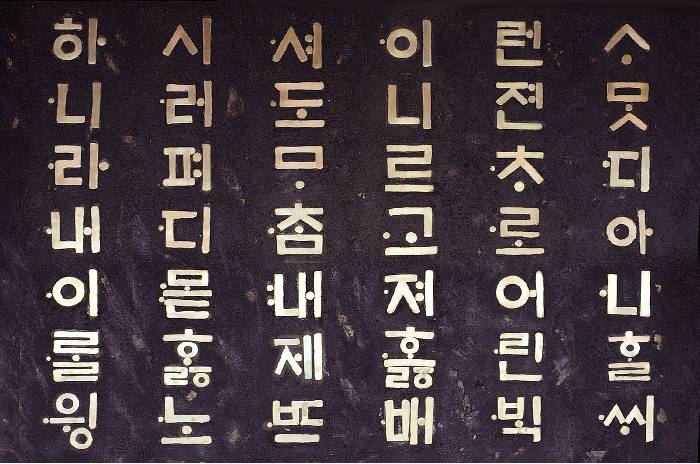
Hunminjeongeum, meaning "proper sounds for the instruction of the people" in Korean, is the former name for the Korean alphabet, Hangeul. The Hunminjeongeum Haerye Edition is a book that explains the principles and purpose of Hangeul, as well as how to use and pronounce the letters. King Sejong, the 4th king of the Joseon dynasty, created the Korean alphabet in order to help all commoners learn to read and write. The task was promulgated by the scholars of Jiphyeonjeon Hall (or "The Hall of Worthies") and in 1446, the alphabet was distributed and made known to all citizens.
The shape of each letter is made according to the position of the vocal organs used to articulate the corresponding sound. Hangeul is known to be unique among the world's writing systems for having been systematically created without any direct influence from pre-existing writing systems.
This page was last updated on September 15, 2021, and therefore information may differ from what is presented here.
The Annals of the Joseon Dynasty (Designated 1997)
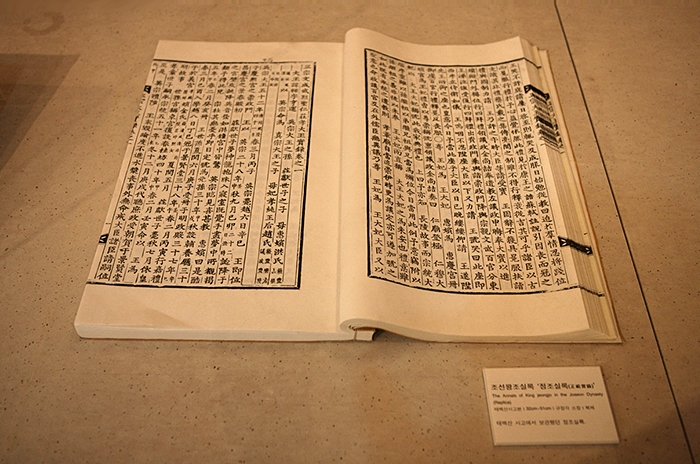
The Annals of the Joseon Dynasty (1392-1910) is a chronological record of kings' historical reigns. The annals cover the daily records of historical and cultural aspects of 25 kings, over a span of 470 years.
This page was last updated on September 15, 2021, and therefore information may differ from what is presented here.
Seungjeongwon Ilgi; Diaries of the Royal Secretariat (Designated 2001)
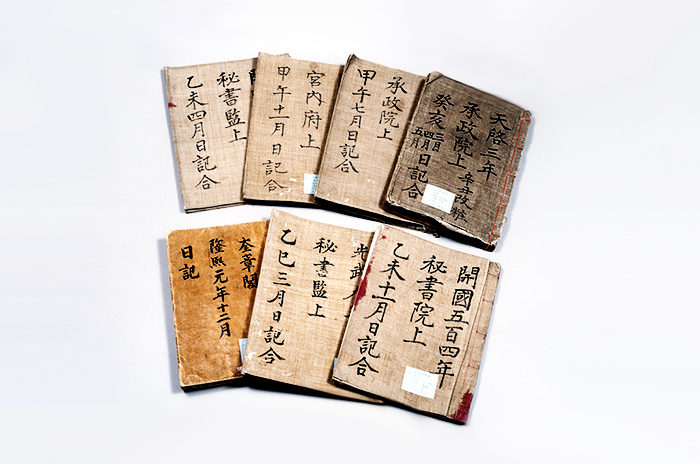 【 Photo credit: Cultural Heritage Administration 】
【 Photo credit: Cultural Heritage Administration 】 Seungjeongwon Ilgi are the diaries of the royal secretariats, full of history and state secrets. The secretariat was responsible for keeping detailed records of the kings’ daily events, weather reports, and other court affairs during the Joseon dynasty (1392-1910). There are about 3,000 detailed diaries remaining, highly helpful for the study of the Joseon dynasty.
This page was last updated on September 15, 2021, and therefore information may differ from what is presented here.
Buljo Jikji Simche Yojeol (Vol. II); The Second Volume of “Anthology of Great Buddhist Priests’ Zen Teachings" (Designated 2001)
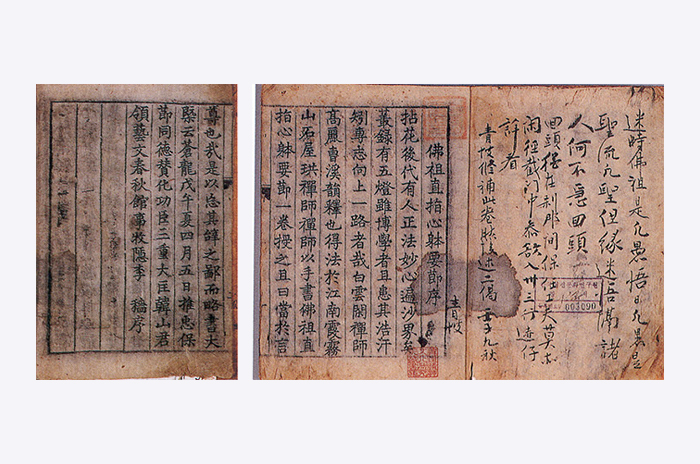 【 Photo credit: Cultural Heritage Administration 】
【 Photo credit: Cultural Heritage Administration 】 Buljo Jikji Simche Yojeol is a book printed in 1377 using the metal type method at Cheongju Heungdeoksa Temple Site. Monk Baegun (1299-1374) compiled several valuable principles of teachings into a Buddhist book. It is the world's oldest evidence of movable metal type printing available, proving to be an important technical change in the printing history of humanity. This practical printing method has especially influenced the history of Oriental printing, and thus its recording inheritance is highly valued even today.
This page was last updated on September 15, 2021, and therefore information may differ from what is presented here.
Uigwe; The Royal Protocols of the Joseon Dynasty (Designated 2007)
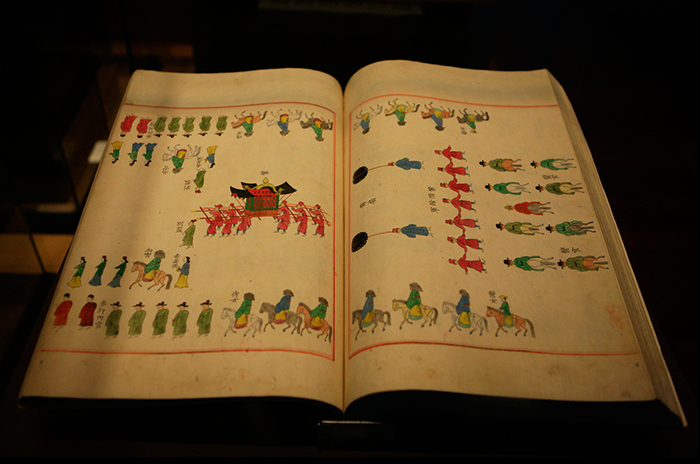
Uigwe, which literally means “a model for rituals,” records text and illustrations of all the important state ceremonies and events of the Joseon dynasty (1392-1910). Following the tradition of Confucianism, this guide covers royal weddings of a king and queen, crowning of the prince, succession of a new ruler, funerals and other various state events. It also provides illustrations of major events that take place, along with detailed descriptions. The records are centered around detailed drawings alongside written texts, providing scholars with more understanding into the scale and design of histoircal events.
This page was last updated on September 15, 2021, and therefore information may differ from what is presented here.
Printing Woodblocks of the Tripitaka Koreana & Miscellaneous Buddhist Scriptures (Designated 2007)
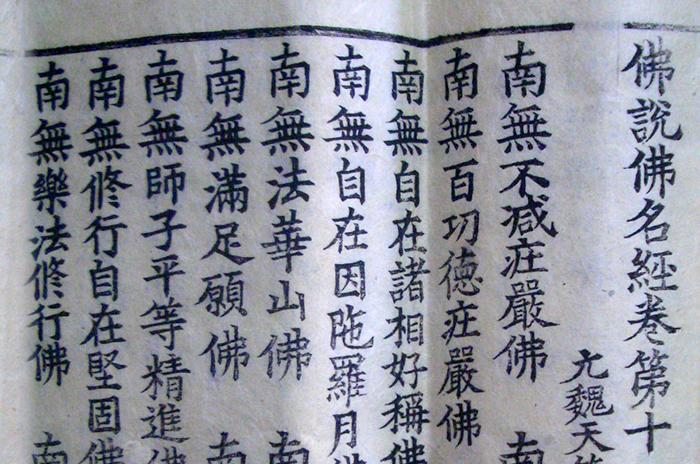 【 Photo credit: Cultural Heritage Administration 】
【 Photo credit: Cultural Heritage Administration 】 Tripitaka Koreana is a complete collection of Buddhist scriptures carved into wooden printing blocks, numbering over 8,000. The Tripitaka Koreana was created with the support of the Goryeo dynasty (918-1392) royalty, while the Miscellaneous Buddhist scriptures were separately produced by the monks at Haeinsa Temple. About 5,000 printed woodblocks were created from 1098 to 1958 and were stored at the temple.
In addition, this heritage is recognized as the most comprehensive example of the woodblock printing technique in all known Buddhist scriptures of that time in terms of its scholastic excellence (comparing, proofreading, adjusting, and arranging).
This page was last updated on September 15, 2021, and therefore information may differ from what is presented here.
Donguibogam: Principles and Practice of Eastern Medicine (Designated 2009)
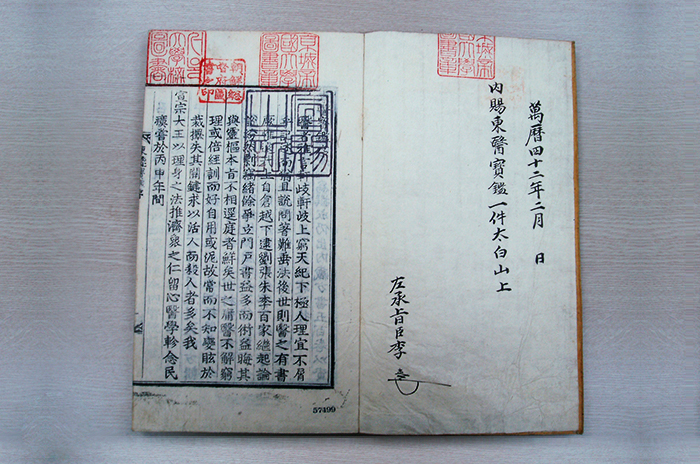 【 Photo credit: Cultural Heritage Administration 】
【 Photo credit: Cultural Heritage Administration 】 Donguibogam is an encyclopedia of the principles and practices of Eastern medicine written by Heo Jun (1546-1615), a renowned court physician in the Joseon dynasty. It contains medical information, as well as records of medical practice used to treat patients. Medicinal ingredients that were readily available at the time were suggested and preventive measures for any potential diseases that may break out were also recommended. The encyclopedia was written in both Hanja (Chinese characters) and Hangeul for easy understanding by the commoners.
This page was last updated on September 15, 2021, and therefore information may differ from what is presented here.
Ilseongnok: Daily Records of the Royal Court and Important Officials (Designated 2011)
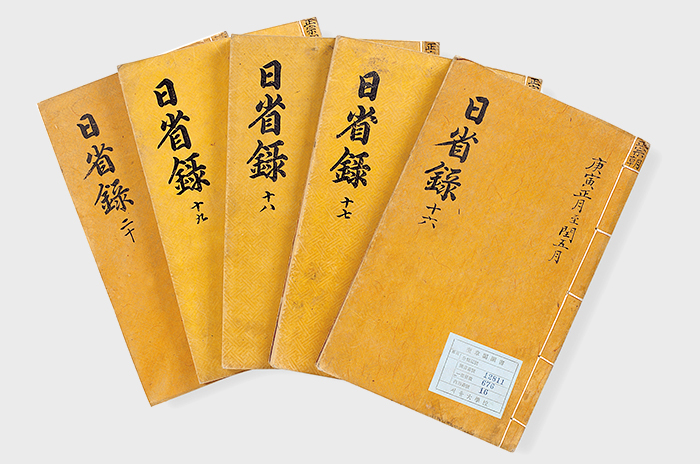 【 Photo credit: Cultural Heritage Administration 】
【 Photo credit: Cultural Heritage Administration 】 Ilseongnok, or The Daily Records of the Royal Court and Important Officials, are treasured royal heritages as well as written inscriptions by kings that remained in order to reflect on one's governance and to serve as a resource for future rulers. Ilseongnok were written by many kings but it was not until King Jeongjo (1752-1800), the 22nd ruler of the Joseon dynasty (1392-1910), that the records were sent to the staff in Gyujanggak, the royal library, for note and approval. These books are different from other state publications in the fact that they take the form of personal journals, involving details of exchanges and political issues of both Eastern and Western countries, hence considered highly valuable in the aspect of world history.
This page was last updated on September 15, 2021, and therefore information may differ from what is presented here.
Human Rights Documentary Heritage 1980 Archives for the May 18th Democratic Uprising Against Military Regime in Gwangju (Designated 2011)
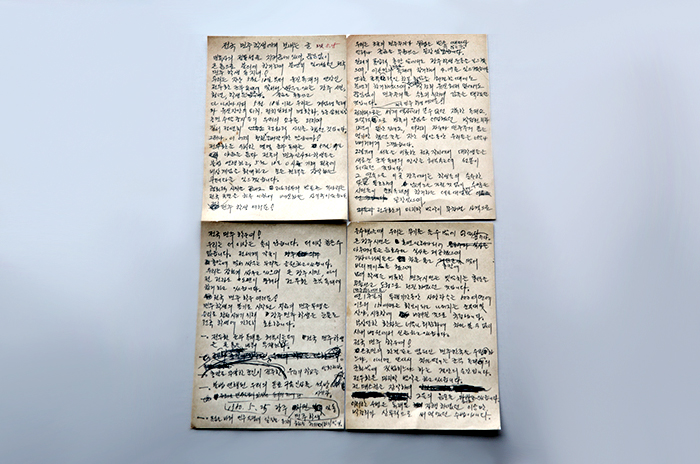 【 Photo credit: Cultural Heritage Administration 】
【 Photo credit: Cultural Heritage Administration 】 This written material relates to the Democratic Uprising, which occurred on May 18, 1980 in Gwangju, and the series of relevant events continuing until May 27. The collection features archives related to this democratic move in the forms of files, photographs and video footage concerning the pro-democracy movement.
This page was last updated on September 15, 2021, and therefore information may differ from what is presented here.
Nanjung Ilgi: War Diary of Admiral Yi Sun-sin (Designated 2013)
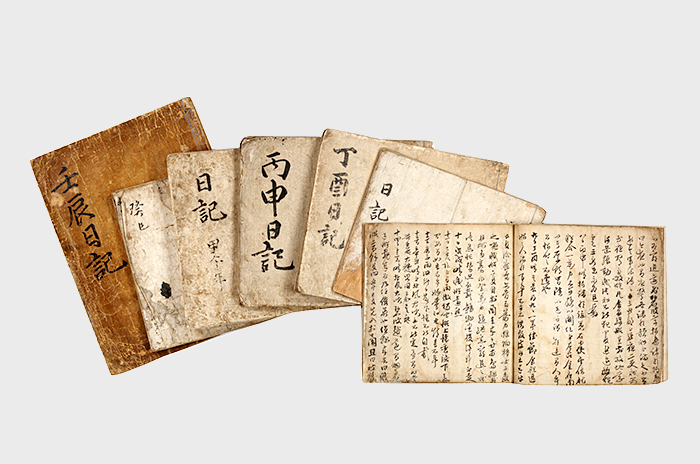 【 Photo credit: Cultural Heritage Administration 】
【 Photo credit: Cultural Heritage Administration 】 Nanjung Ilgi is the handwritten war diary of Admiral Yi Sun-sin (1545-1598). The entire series narrates events that took place during the Imjin War (1592-1598), including the admiral’s personal observations and commentary, weather situations, geography, and the controversial circumstances. The diary is considered to be a highly treasured description of Korean history.
The diary consists of seven volumes of notes written almost daily from January 1592 through November 1598, just days before Yi was killed in the last sea battle of the war. Besides, the diary also contains a number of poems, recited by Koreans even to this day, heightening its literary value, of which is hardly found in other historical remains.
This page was last updated on September 15, 2021, and therefore information may differ from what is presented here.
Archives of Saemaul Undong (New Community Movement) (Designated 2013)
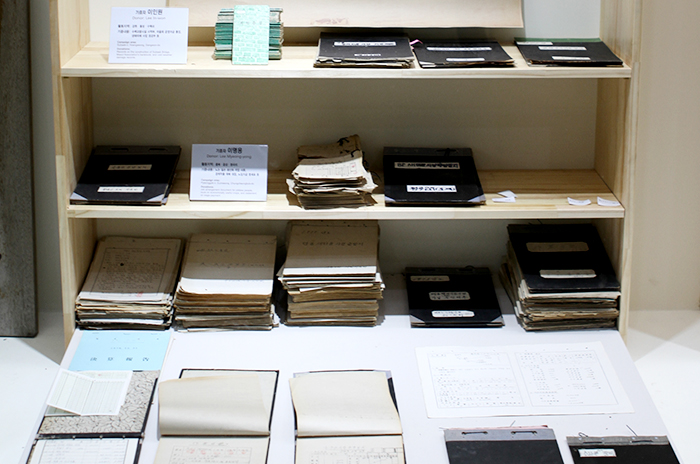 【 Photo credit: Cultural Heritage Administration 】
【 Photo credit: Cultural Heritage Administration 】 Korea is one of the world's highly developed countries as well as a benchmarking model for many developing nations as it achieved rapid economic growth, thanks in large part to the Saemaul Undong (New Community Movement). This helped the country to step out from the list of the poorest countries in the world to a major player in the world economy in the present day. Laying a significant foundation, the world has also acknowledged this remarkable journey, introducing the process as a valuable asset for humankind to learn.
The archives include presidential speeches, government papers, village documents, letters, manuals, photographs and video clips related to the movement conducted from 1970 to 1979.
This page was last updated on September 15, 2021, and therefore information may differ from what is presented here.
Confucian Printing Woodblocks in Korea (Designated 2015)
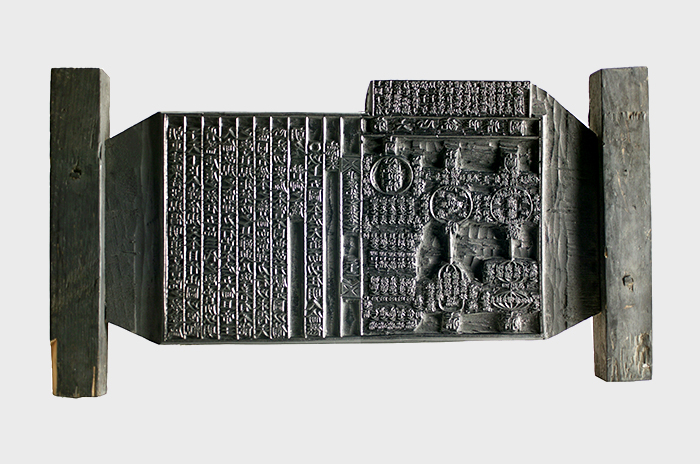 【 Photo credit: Cultural Heritage Administration 】
【 Photo credit: Cultural Heritage Administration 】 Confucian Printing Woodblocks in Korea were made during the Joseon dynasty to print the studying materials for scholars. Over 60,000 woodblocks were produced on wooden boards donated by 305 families living in the region to print a variety of contents such as literature, politics, economics, philosophy and more.
These Confucian printing woodblocks became an academic resource for several local intellectual communities over the years, and a form of collective intelligence was created. Hand-carved wooden panels hold a rare value and historical importance for being living proof of the process of producing books by a collective community; deciding the contents and sharing the costs among scholars to print the books.
This page was last updated on September 15, 2021, and therefore information may differ from what is presented here.
The Archives of the KBS Special Live Broadcast “Finding Dispersed Families” (Designated 2015)
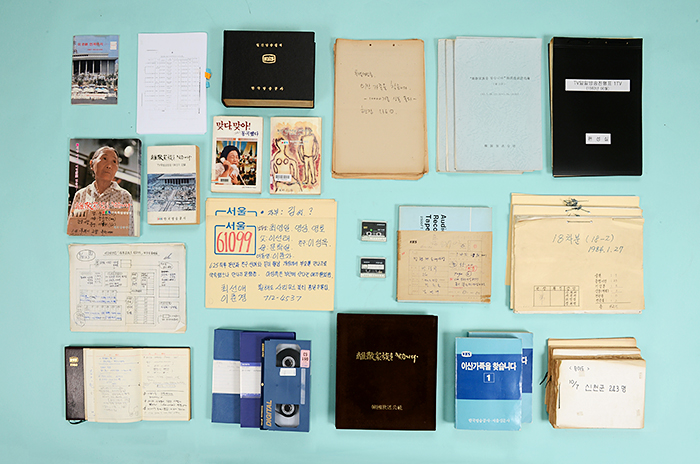 【 Photo credit: Cultural Heritage Administration 】
【 Photo credit: Cultural Heritage Administration 】 The KBS Special Live Broadcast “Finding Dispersed Families” is the world's biggest scale of live broadcast, aired non-stop for about 435 hours 45 minutes. The stories of over 50,000 separated families were aired and the moving scene of reunions among 10,000 war-dispersed families was recorded in real time.
The Archives of the KBS Special Live Broadcast “Finding Dispersed Families” is comprised of reunions that took place over 138 days, from June 30 through November 14, 1983. The collection holds 463 original copies of videotapes, producers’ journals, the applications written by the families, broadcast ephemera, audiotapes, daily broadcast schedules, cue sheets and photographs.
This page was last updated on September 15, 2021, and therefore information may differ from what is presented here.
Royal Seal and Investiture Book Collection of the Joseon Dynasty (Designated 2017)
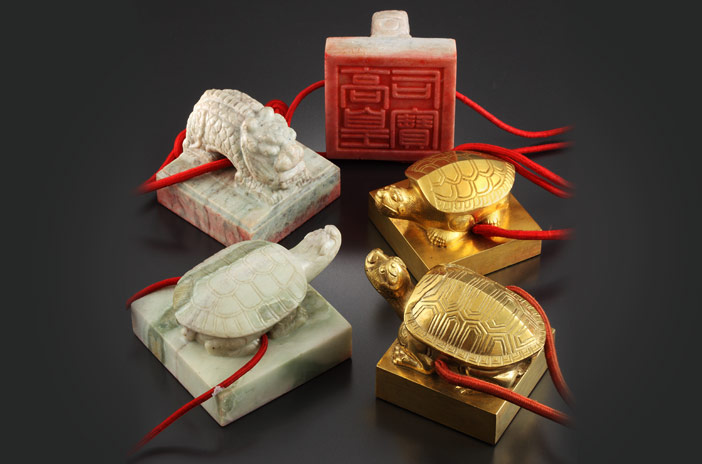 【 Photo credit: Cultural Heritage Administration 】
【 Photo credit: Cultural Heritage Administration 】 The royal seal, made of gold, silver, or jade, was used in rituals for the royal family during the Joseon dynasty. The seal was made when the king or queen were given a title or when a queen, crown prince, or wife of the crown prince was appointed. The Investiture Book served as a form of certification that recorded important lifetime events of the royal family, such as crowning the heir. A seal and investiture would be given to the successor, providing legitimacy of the new ruler. After the passing of a ruler, these items were enshrined together to preserve eternal legitimacy of the royal lineage.
The royal seal symbolized the everlasting continuity of the king and the investiture was an accompaniment to the seal that provided an archive of important events. In a more literal aspect, the royal seal and investiture collection served to secure the authority and political power of the royal family. The collection is highly valued in terms of humanity and cultural heritage as these historical records contain text, handwriting, sources, and embellishment of that time.
This page was last updated on September 15, 2021, and therefore information may differ from what is presented here.
Documents on Joseon Tongsinsa: The History of Peace Building and Cultural Exchanges between Korea and Japan from the 17th to 19th Century (Designated 2017)
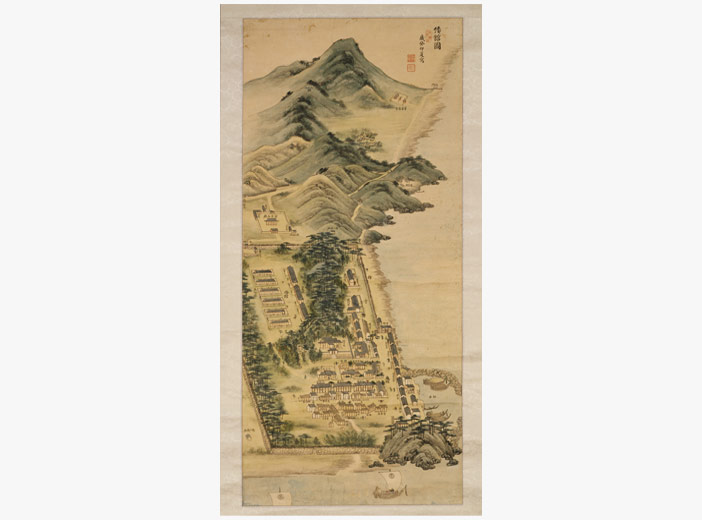 【Photo credit: National Museum of Korea 】
【Photo credit: National Museum of Korea 】 These records document the 12 meetings that took place from 1607 to 1811 between the Joseon dynasty and Japan's Edo period, through the delegates of the Joseon period known as the Joseon Tongsinsa, invited by the Tokugawa shogunate. The materials provide excellent information into the historical backgrounds of both Korea and Japan. The meetings took place to restore the broken ties of the two countries after Korea was plundered during the late 16th century by Toyotomi Hideyoshi.
The compilation describes how the two countries achieved further development through mutual exchange in academics, arts, industry, and other activities. These records are considered as a valuable asset to humanity due to the historical demonstration of accepting diversity for mutual prosperity.
This page was last updated on September 15, 2021, and therefore information may differ from what is presented here.
Archives of the National Debt Redemption Movement (Designated 2017)
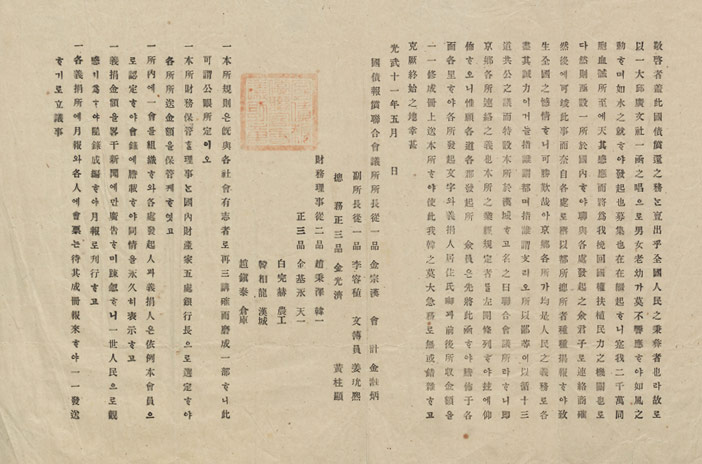 【 Photo credit: Cultural Heritage Administration 】
【 Photo credit: Cultural Heritage Administration 】 The Archives of the National Debt Redemption Movement record the history and circumstances surrounding the citizen-led campaign to repay the national debt running from 1907 to 1910. Approximately 25% of the population participated in the movement, with men cutting out smoking and drinking, women donating their rings and hair accessories, and even beggars and thieves giving what they could. The movement was even advertised in an English newspaper, spreading the word to Koreans living abroad.
The movement was also mentioned at the Hague Convention of 1907, and from there spread to the entire world, provoking the interest of other countries in similar conditions. While the original movement failed, it was again brought up 90 years later in the 1997 Asian financial crisis. At the time, many Korean citizens contributed and made efforts to help the government. These movements showcase the mentality of the Korean people, individuals who actively unite and fulfill their duty as a citizen in times of crisis.
1330 Korea Travel Hotline: +82-2-1330 (Korean, English, Japanese, Chinese, Russian, Vietnamese, Thai, Malay)
This page was last updated on September 15, 2021, and therefore information may differ from what is presented here.
